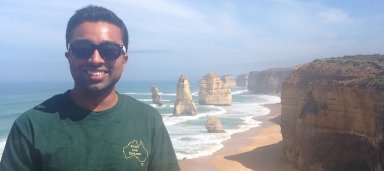
Zeeshan Rasheed - Feb
Zeeshan Rasheed is a 5th year EAS student currently working as a student assistant for the School of Earth and Atmospheric Sciences.His concentration is in Environmental Science with a minor in Sociology. Zeeshan participated in the Pacific Study Abroad Program 2015, traveling to Australia, New Zealand, and Fiji. His other interests include conservation and sustainability.
In his spare time, Zeeshan loves traveling and hiking. He is also the president of EAS Club, EAS representative for the SGA undergrad house of representatives and a member of both the Sustainability Committee and the Committee for Undergraduate Recruitment for EAS (CUREAS).

Shelby Miller - Jan
Shellby Miller is an EAS senior who has been researching paleopclimate with Dr. Kim Cobb since August 2014. Her near term goals are to continue with her research in Dr. Cobb’s lab and submit for publication by Fall 2016. Some of her accomplishments include President’s Undergraduate Research Award (PURA) Salary (Spring 2015), Rutt Bridges Award (Summer 2015), PURA Travel (Fall 2015), Joe S. Mundy Global Learning Endowment (Spring 2016), and most recently a poster presentation at the American Geophysical Union (AGU) Fall Meeting 2015.
In November 2015 she participated in a field expedition to Kiritimati Island of the Republic of Kiribati. She enjoys being the volunteer coordinator for Georgia Tech’s Association of Environmental Engineers and Scientists because she gets to meet new people and give to the community through volunteer projects that work toward improving the environment. In her spare time she enjoys hiking and gardening.
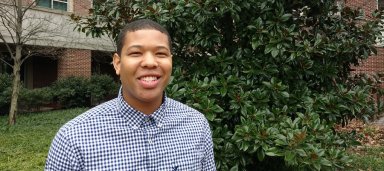
Jordan Rogers - Dec
Jordan Rogers is a senior at Georgia Tech majoring in Meteorology. He currently works as one of the student assistants in the School of Earth and Atmospheric Sciences. His future plans include being commission as a 2nd Lt. in the Air Force, in which he will be selected as a pilot.
In his spare time he enjoys traveling, spending time with friends, playing sports such as basketball, flag football, and paintball. Jordan also enjoys reading and going to the movies.
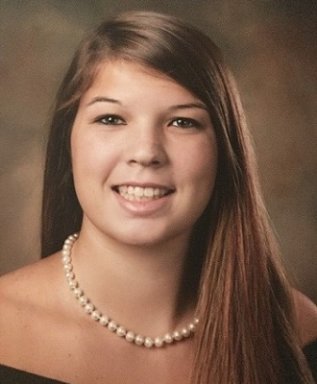
Kaitlin Gardner - Nov
Kaitlin Gardner is a 4th year EAS major minoring in Public Policy. She is currently working with Dr. Andrew Newman on seismology. This past spring, after receiving the PURA award, Kaitlin joined Dr Newman’s group to Costa Rica to assist with onsite research. Kaitlin also took part in a project at the University of Reykjavic in Iceland on nuclear energy on a study abroad program this last summer.
She is a co-chair of the EAS Club and loves spending her free time participating in that. Kaitlin says “planning events and getting to know everyone in the program is pretty awesome.” She also loves being a TA for 2600 and when she does get time on the weekends, she goes to football games (GO JACKETS) or hikes.
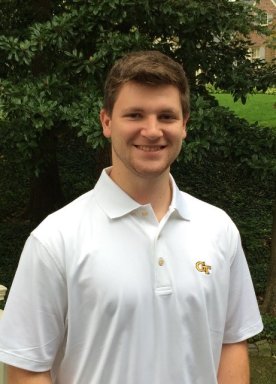
Matt Meister - Oct
Matthew Meister is in his 6th year in Mechanical Engineering and will be graduating this December. In his line of research he works with Dr. Britney Schmidt on underwater vehicles and CubeSats, specifically mechanical design and system integration. For the underwater vehicle research he primarily focuses on Icefin, which is the vehicle Dr. Schmidt built using her startup funds. Matthew is the lead mechanical engineer on the vehicle and is responsible for the mechanical design and analysis. Currently he is working on a robotic arm that will be attached to Icefin and will have the capabilities to collect water samples as well as taking samples of the ice shelf from the underside and even sediment from the ocean floor. Icefin was nominated for GTRI’s 2014 Innovative Research Award.
This past spring Matthew performed research for CubeSat which was part of a Jet Propulsion Laboratory (JPL) project to design a CubeSat that would be sent to Europa, an icy moon around Jupiter. He was the lead engineer for the spacecraft design team that came up with The Europa Plume and Exosphere CubeSat (EPEC). Matthew was also part of the group that flew out to JPL this summer and met with the engineers to present his team’s design. He also gave two conference presentations/posters this summer (AbSciCon - Chicago and IGS - Cambridge).
During his time at Georgia Tech, he was an undergrad researcher for Dr. Michael West at GTRI in 2013 and 2014, President of Wreck Racing in 2013 and developed a custom turbo kit for his team’s competition car that placed 5th at competition in 2014. In his spare time Matthew likes working on cars and cycling. Currently he is working on his 1995 Land Cruiser making some modifications for more extreme off road use. He is also training for a 100 mile bike ride, 6 Gap Century.
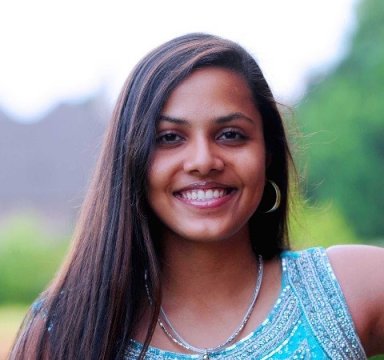
Namrata Kolla - Sep
Namrata Kolla is a 4th year student double-majoring in Earth and Atmospheric Sciences and Public Policy. She says that Dr. Dana Hartley, Dr. Richard Barke, and Ms. Leslie Ross have been her greatest mentors through college. Namrata is currently researching the crossroads of earth sciences and public policy, such as how to quantify the negative social effects of environmental damage or how to improve the communication between scientists and policymakers.She is also researching the predictability and long-term trends of ocean acidification with Dr. Emanuele Di Lorenzo.
Some of her notable achievements include joining the President's Scholarship Program as a "Walk-on" Stamps scholar last semester and being chosen to be part of the 113th Congress' Stennis Center program. She has also co-authored a paper with Congressman Sanford Bishop about Georgia's chicken industry. Along with being the co-chair of External Relations for the Mental Health Student Coalition for Georgia Tech she is also co-chair of Talks@Tech for Omicron Delta Kappa honor society. Talks@Tech is an initiative that brings international political leaders to campus to discuss controversial, global issues not discussed in the classroom. Namrata was also the co-chair of the SGA Sustainability Committee last year where she created the first-ever Greenovation and made Green Alliance an established component of Tech's environmental movement.
When she’s not studying or in meetings, Namrata enjoys spending time with her first-year residents as a Peer Leader (RA) in Howell Residence Hall. She goes on to say, “I also enjoy watching Game of Thrones and The Walking Dead, going through TIME's Top 100 books of all-time, and trying out new physical hobbies, the most recent one being salsa-dancing."
Lauren Merrit - Jan
Lauren Merritt is a 4th year student in Earth and Atmospheric Science concentrating in Meteorology. Her interests include severe weather, aviation, and mathematics. She first became interested in meteorology in the 4th grade when she read books about severe weather and natural disasters. Her freshman year in college she volunteered at the National Weather Service in Peachtree City, where she shadowed forecasters and learned how to launch weather balloons. During her sophomore year, she researched at GTRI in the Severe Storms Research Center in the Sensors and Electromagnetic Applications Laboratory. There she researched different audio signatures in thunderstorms. Her junior and senior year she interned at The Weather Channel and was a TA for EAS 1600. She is currently a TA for Atmospheric Chemistry and researches hurricanes with Dr. James Belanger. She is also finishing her Bachelors degree and is enrolled in the B.S./M.S. program working towards her Masters degree in Meteorology. After graduate school, she would like to work at The Weather Channel, Delta Airlines, or continue to do research in severe weather.
Sebastian Ortega Arango - Jan
1/3/2017
The following is an exerpt from the College of Sciences story by A. Maureen Rouhi, Ph.D. Click here to read the entire story.
Sebastián Ortega graduated with Ph.D. and M.S. degrees in Earth and Atmospheric Sciences. He came to Georgia Tech with a B.S. in Civil Engineering from Universidad Nacional de Colombia. He is off to Colombia to work for the weather-prediction company CFAN, and then he will apply for a postdoctoral position in Colorado.
Advice to new graduate students: Do not be afraid to approach problems from unusual perspectives.
What attracted you to study in Georgia Tech? How did Georgia Tech meet your expectations?
What attracted me most was the possibility to study weather and climate. During my senior year studying for a bachelor’s degree in civil engineering, I was particularly interested in studying fluid dynamics. I had done my senior thesis in physical limnology, and I wanted to keep studying along the same lines. Weather and climate were particularly interesting for me; I cannot think of a more interesting area to study fluid dynamics.
I was encouraged to apply to Georgia Tech by Oscar Mesa, a professor in my university, Universidad Nacional de Colombia, and Carlos Hoyos, a Georgia Tech alumnus who was working with Peter J. Webster. Peter and Carlos were looking for a new Ph.D. student to join their team.
When I was taking a class with Oscar Mesa, he mentioned the opportunity to study at Tech and connected me with Carlos. After exchanging a few e-mails with Carlos and other students in Peter’s lab, I applied for admission. I was very interested in the research they were doing, so I was very happy to receive an acceptance letter a few months later.
Peter has had around seven Colombian Ph.D. students over the years and has worked with many more. This is important for Colombia, because many of his former students are applying in Colombia the knowledge they gained in meteorology at Georgia Tech.
Yun Hee Park - Dec
Yun Hee is a 3rd year graduate student working under the advisement of Dr. Irina Sokolik. Her line of research includes remote sensing and numerical modeling related to biomass burning, with recent research looking at impacts of smoke on UV fluxes. Yun Hee earned her B.A in Atmospheric Science from Yonsei University and a M.A in Atmospheric science from Univ. of Alabama in Huntsville. Working with Dr. Sokolik, Yun Hee published a paper last summer, which title is “Toward Developing a Climatology of Fire Emissions in Central Asia”.
In Yun Hee’s spare time, she enjoys cooking and spending time with his family and is expecting their second baby in December.
Giovanni Liguori - Nov
Giovanni Liguori is a 4th year graduate student in EAS. He received his B.S. in Environmental Sciences, summa cum laude, from University of Naples “Parthenope” in Italy. While at Georgia Tech, he has been awarded the Domenica Rea D'Onofrio Fellowship and written 8 peer-reviewed publications that can be viewed on his webpage at www.oceanography.eas.gatech.edu/gianni/pubblications/
His scientific interest is oceanography and climate dynamics from interannual to decadal timescales. His current project focuses on the mechanisms responsible for the observed Pacific decadal variability, which impact long-term transitions in marine ecosystems and influence the statistics of weather including ocean and atmosphere extremes such as strong droughts, hurricanes and marine heatwaves. Specifically, combining observations and model outputs, he is studying how tropical and extra-tropical Pacific climate modes interact to produce decadal variability.
In addition to his principal research topic, the Pacific decadal climate variability, Giovanni recently broadened his research horizon by involving himself in a project aimed to study the impact of climate change on Peruvian glaciers. He gained firsthand experience by attending a workshop in Lima, Peru, and visited the Andean glacier of Artesonraju, hiking up to an altitude of about 18,000 feet. The project was broadcasted by a Peruvian news channel.
In his spare time, Giovanni enjoys cooking and hosting events for his friends, playing soccer, racquetball, traveling, and hiking.
Pagination
- Previous page
- 10 Page 10
- Next page